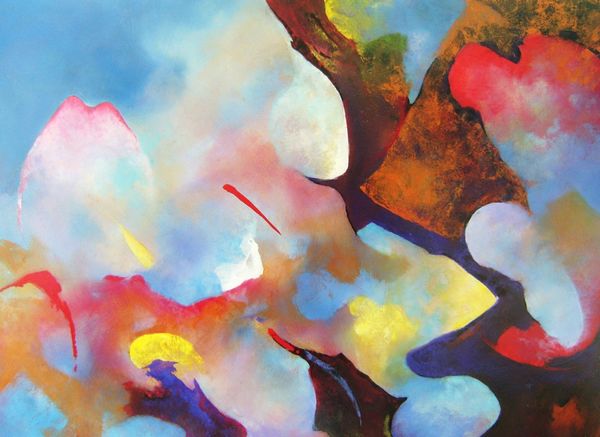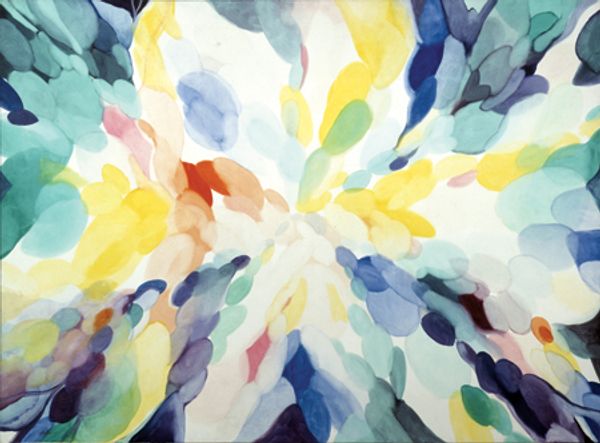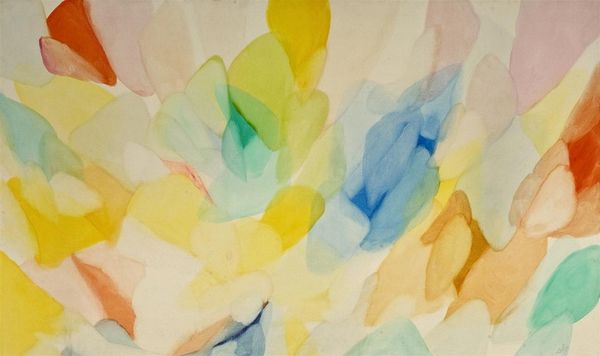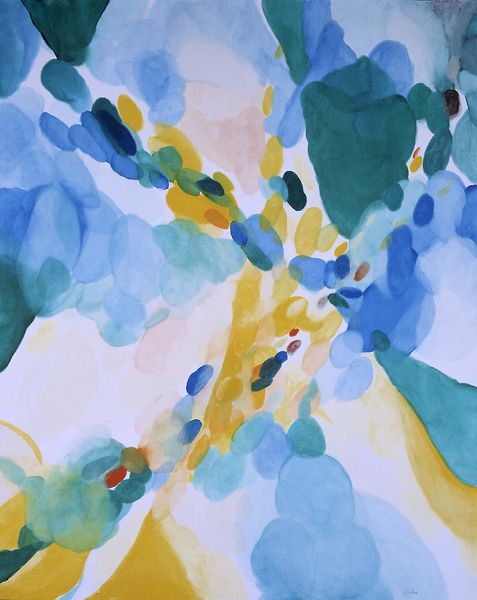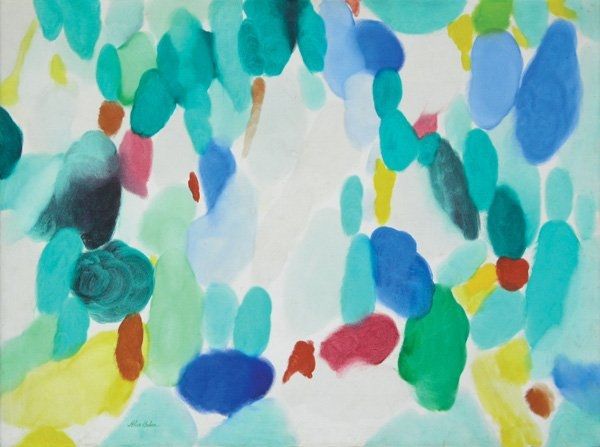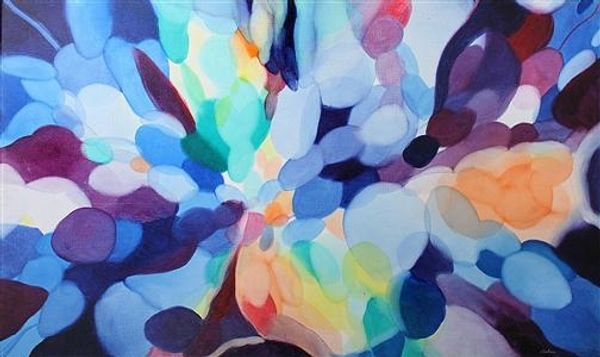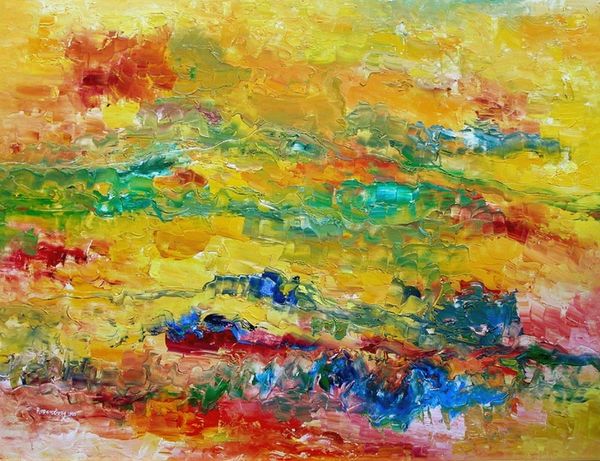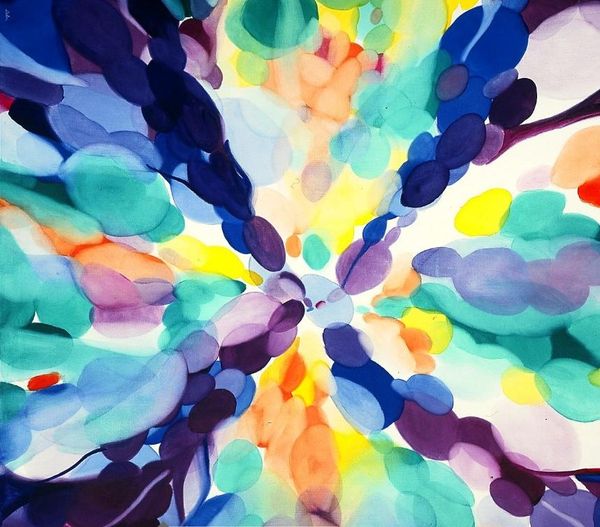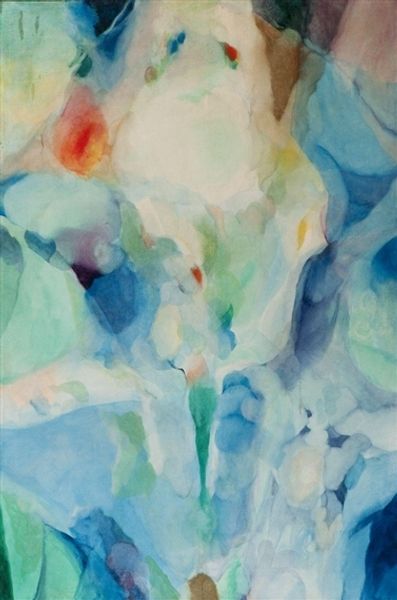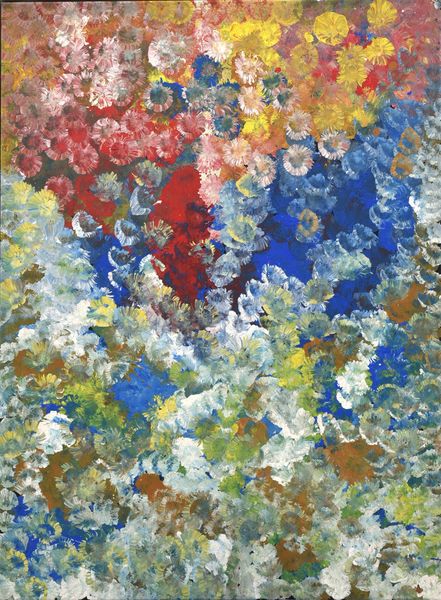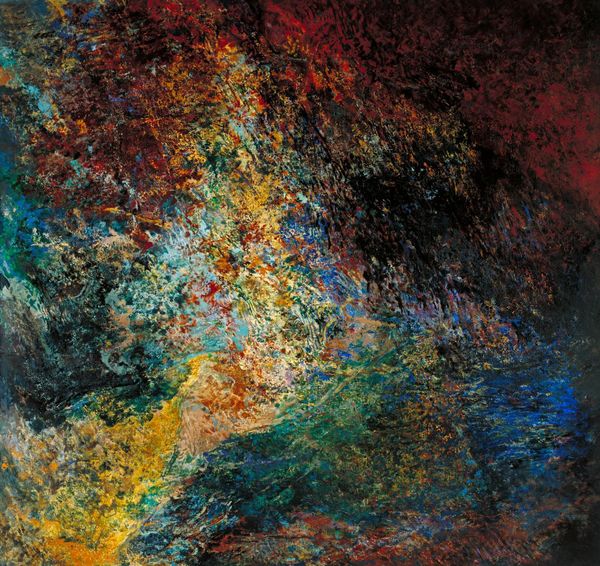
Copyright: Alice Baber,Fair Use
Editor: Here we have Alice Baber’s "Noble Numbers," created in 1965, with what seems to be acrylic on canvas. The interplay of overlapping colors gives it an almost dreamlike, fluid quality. What's your take on it? Curator: Considering the social and art-historical landscape of the 1960s, it’s important to recognize the rise of color-field painting, an art movement Baber was certainly involved in. "Noble Numbers," through its buoyant color and form, reflects a shift away from the angst-ridden narratives of earlier Abstract Expressionism. Think about the institutions supporting abstract art during the Cold War - the Museum of Modern Art, for example. Do you think this artwork challenges or supports the socio-political climate of the time? Editor: That's interesting. I see your point about the departure from angst, but the sheer density of overlapping colors, almost like cells dividing, also strikes me as maybe a little bit overwhelming. Curator: Exactly! Its non-hierarchical composition democratizes the picture plane, right? Every form seems equally important, denying a clear focal point. Consider how galleries and critics initially framed such artwork. What kind of rhetoric surrounded its reception, and what audiences did it serve? Editor: So, it’s not just a pretty picture; it’s engaging in a conversation about the very nature of representation and viewership. I guess I’d not considered the political context of its reception, too. Curator: Precisely. Its aesthetic choices are inseparable from the political forces shaping the art world. It makes you wonder what other narratives might be hidden in abstract art. Editor: Thanks! I’ll certainly be seeing these kinds of works with new eyes from now on.
Comments
No comments
Be the first to comment and join the conversation on the ultimate creative platform.
